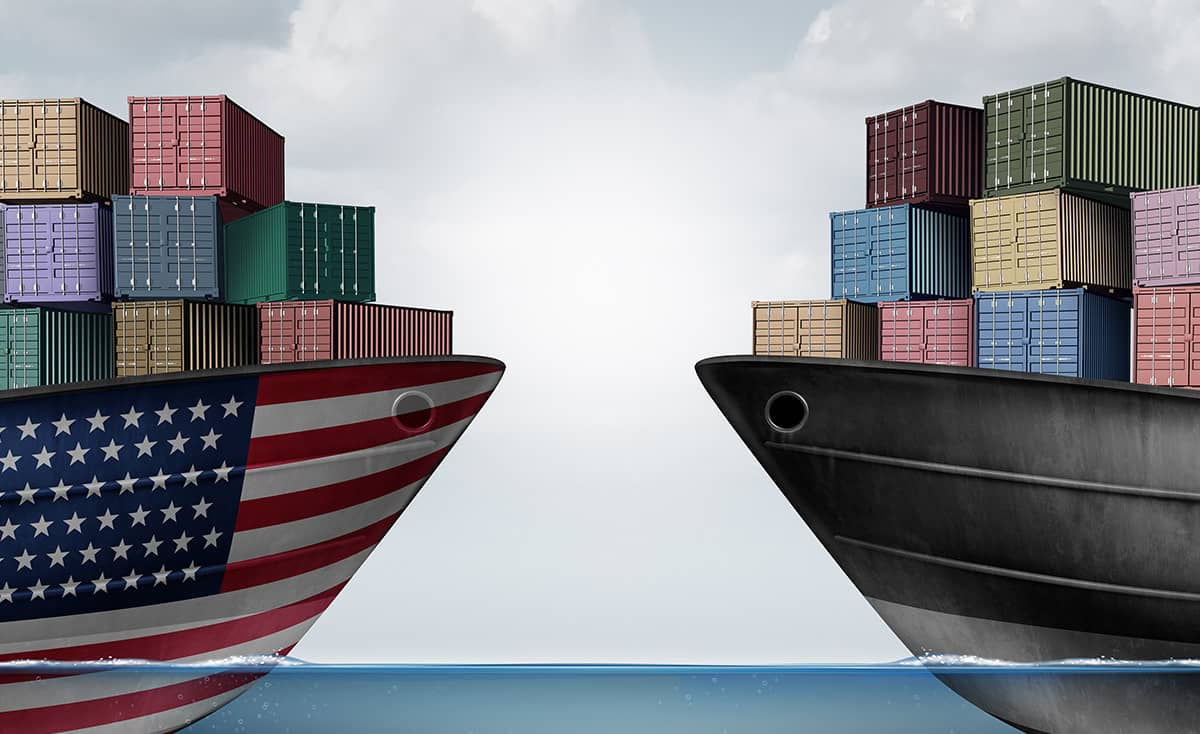
The US-China trade war is creating challenges to U.S. apparel suppliers, threatening price increases to American companies and consumers, and at the same team aiding China’s ongoing initiatives to “sunset” industries that pollute and use lower-skilled workforces.
Throughout the past year, the world’s two largest economies have imposed tariffs on billions of dollars worth of one another’s goods. President Trump has long accused China of intellectual property theft, unfair trading practices and taking advantage of the United States.
President Trump announced on April 3rd, 2018, that United States Trade Representative (USTR) published a list of products imported from China that will be subject to additional tariffs on approximately $50 billion worth of Chinese imports as part of the United States response to China’s unfair trade practices.
Since September 17th, 2018, the trade community has been on alert for the increase of China tariffs from 10% to 25%. Over the past few months, we have all seen several postponements. There were assumptions in the trade community that led some to believe the additional tariff increases were unlikely with all postponements that have taken place. That all changed on May 6th, 2019, when President Trump advised “the 10% will go up to 25% on Friday [May 10th, 2019].” via Twitter.
In 2017, China started a series of initiatives (e.g. Made in China 2025) targeting industries that polluted or placed high demands on energy and water. The textile industry is accredited with generating 20% of the world’s water pollution (in the process is the second largest pollutant of freshwater), and it consumes 25% of world’s chemical production. The textile industry in China was burdened with increased regulations, enforcement, and reduced hours of operations that increased cost and motivated buyers to look in other regions of Asia. The addition of tariffs to the mix increased the speed of apparel manufacturing migration to Vietnam, India, Bangladesh, Thailand, and others.
Initially, these alternative counties provided both a cure and lower costs, but as demand shifted suddenly in 2018 and 2019 the existing manufacturing base was fully utilized, and prices rose. The transition also challenged U.S. suppliers with new cultures, languages, holidays, longer transportation times, infrastructure issues, and adherence to time and quality standards.
No doubt that some of the manufacturing base will support the new consumption economy of China, but strategically it may be a win-win for Beijing. In contrast, U.S. apparel suppliers need to be concerned that 90% of all polyester fiber is manufactured in China. It still finds its way to the U.S. without duty, stealthily within goods manufactured in other countries, and that may change. At one time duties were applied according to the content or contribution of all countries involved in the manufacture of goods, and not just the “last” country. That too could change, and while there are other sources of fiber, they are limited in scale and lack the efficiencies of the Chinese fiber industry.
As of late, China has plans to retaliate against additional American tariffs, which was announced late Friday, in Beijing. China will impose tariffs on $75 billion dollars’ worth of American goods. President Trump declared hours after Beijing’s new trade sanctions, that U.S. companies “to immediately start looking” for alternatives to operating in China.
President Trump was exasperated by Beijing’s decision on August 23rd, 2019 to retaliate against the next round of tariffs. As listed in President Trump’s tweet, he said he would raise tariffs on $250 billion dollars worth of Chinese goods to 30% from the current rate of 25% beginning October 1st, 2019. President Trump went on to advise he would tax the remaining $300 billion dollars worth of imports at a 15%, rather than the 10% he had initially planned. Those increased duties will go in effect September 1st, 2019.

